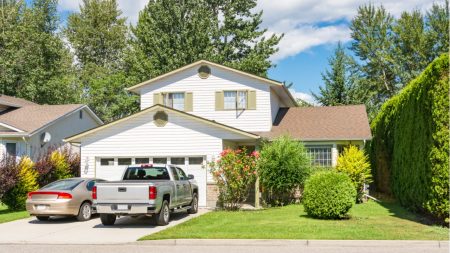RealPeopleGroup/Getty Images: Illustration by Issiah Davis/Bankrate
Under Minnesota law, all vehicle owners must purchase car insurance. Because Minnesota is a no-fault state, all auto insurance policies must include personal injury protection along with liability and uninsured motorist coverage. To explain these requirements and offer strategies that might help keep insurance costs low, Bankrate’s insurance editorial team reviewed Minnesota’s car insurance laws.
Car insurance laws in Minnesota
Minnesota law requires car insurance for every vehicle registered in the state. The minimum coverage limits for a basic auto policy include:
- $30,000 bodily injury liability per person
- $60,000 bodily injury liability per accident
- $10,000 property damage liability per accident
- $25,000 uninsured motorist bodily injury per person
- $50,000 uninsured motorist bodily injury per accident
- $25,000 underinsured motorist bodily injury per person
- $50,000 underinsured motorist bodily injury per accident
- $40,000 personal injury protection (PIP) per person, per accident ($20,000 for medical expenses)
These minimum limits are more robust than the national average and include three types of financial protection: liability protection for property damage or injuries you cause, uninsured/underinsured motorist protection for accidents with another party who doesn’t have enough liability insurance to cover your costs and PIP coverage for you and your passengers’ medical expenses and other costs following an accident.
Minnesota’s car insurance laws don’t mandate any other coverage, which means that a state minimum policy won’t cover any damage to your own vehicle if you cause an accident. If you want that coverage, you’ll need to purchase a full coverage policy with comprehensive and collision coverage. If your vehicle is currently financed or leased, the lender who manages that loan will likely require you to buy full coverage to protect its investment in your vehicle.
Liability insurance requirements in Minnesota
Liability insurance, which provides financial protection for injuries or property damage you cause, is the foundation of all car insurance policies. Minnesota’s 30/60/10 limits for minimum coverage are slightly higher than in neighboring states, but they could still leave you underinsured in the event of an accident.
For example, if you cause an accident and the other driver’s vehicle sustains $20,000 worth of damage, you would be responsible for paying the remaining $10,000 out-of-pocket. If the driver was injured and sustained $60,000 in medical bills, the combination of your per-person bodily injury liability ($30,000) and their PIP medical coverage ($20,000) would leave $10,000 uncovered. If you’re found at fault, that $10,000 would be your responsibility to pay without help from insurance.
Is Minnesota a no-fault state?
Yes, Minnesota is a no-fault state. This means that all drivers in the state must carry no-fault coverage — known as personal injury protection (PIP) or Basic Economic Loss Benefits) — in addition to liability coverage. No-fault coverage pays for medical expenses, lost wages and other basic costs for you and your passengers following a car accident, regardless of who was at fault.
By covering each driver’s most urgent needs after a car accident, no-fault coverage cuts down on drawn-out liability claims and lawsuits. All Minnesotans must purchase a minimum of $40,000 in PIP benefits per person, per accident — $20,000 for medical expenses and $20,000 for non-medical expenses such as lost wages or replacement services.
Keep in mind:
- There’s a six-month limit on PIP claims: If you don’t file a no-fault claim within six months of the accident, you’ll be unable to use this coverage to pay for your expenses.
- Your other mandatory coverage can supplement PIP: If you exhaust your PIP limits and weren’t at fault, the at-fault driver’s liability coverage may cover part or all of your remaining costs. If the other driver was uninsured, or if their liability limits run out, your uninsured/underinsured motorist coverage may kick in.
- No-fault coverage won’t pay for vehicle repairs: PIP won’t cover physical damage to your vehicle; you’ll need collision coverage for that if you caused the accident.
Penalties for driving without insurance in Minnesota
Driving without insurance in Minnesota is a misdemeanor. After a first offense, the driver’s license will be suspended and the driver will be required to pay a $200 fine. If the driver cannot afford to pay the $200 fine, the court may allow the driver to complete community service instead.
In Minnesota, drivers who get their license suspended are required to purchase SR-22 insurance in order to reinstate their license. Drivers who have their license suspended but do not own their own vehicle can either purchase a non-owners insurance policy or get added to another driver’s existing insurance policy.
Maintaining continuous coverage is vital to avoid costly fines and penalties from the state and protect yourself financially from the unexpected. Fortunately, there are many coverage packages you can choose from, and shopping for the cheapest car insurance in Minnesota can help you work this necessary expense into your budget.
Additional auto insurance coverage options in Minnesota
Most drivers choose to purchase coverage beyond the minimum limits required by Minnesota auto insurance laws. Here are some additional policies that are available in Minnesota:
- Collision insurance: Collision insurance pays for your vehicle’s repairs after an accident or collision with a stationary object.
- Comprehensive insurance: Comprehensive insurance pays for your vehicle’s repairs related to non-accident claims, like falling objects, fire or theft.
- Roadside assistance: With roadside assistance coverage, drivers can get access to things like towing services, battery replacement, fuel delivery, extrication, lockout services and tire replacement.
- Rental car reimbursement: Rental car reimbursement pays for a rental car up to certain limits if your vehicle needs to get repaired following a covered claim. Some insurance companies automatically include this coverage in full coverage policies.
- Gap coverage: Gap coverage will pay off your loan balance if your vehicle is totaled in a covered loss or is stolen. Gap is usually optional, and you may be able to get it through your insurance company or your dealership. Keep in mind that gap insurance does have certain requirements.
If you’re not sure how much coverage you need, you may want to speak with a licensed agent. An independent agent or broker can also help you find and compare quotes from top-rated insurance companies, as well as smaller carriers you may not have heard of.
Frequently asked questions
Read the full article here












